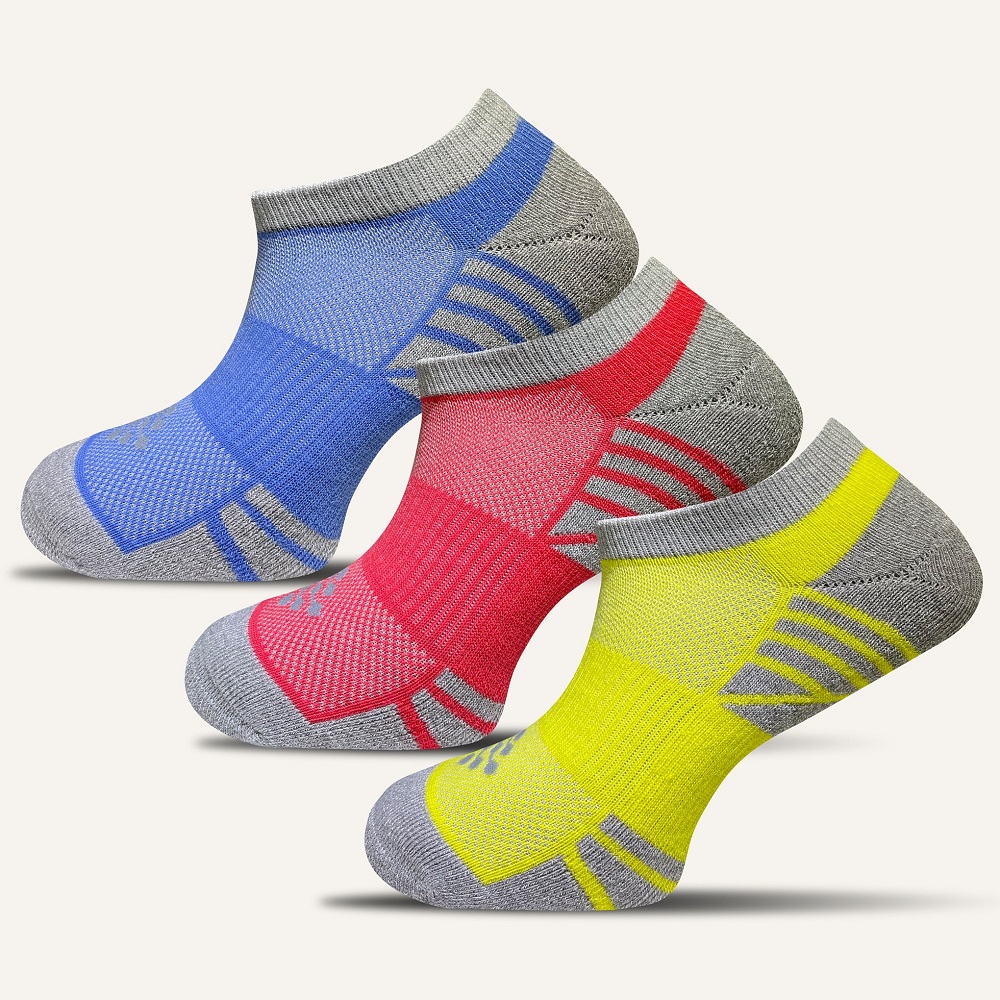Importance of Choosing the Right Athletic Socks
Wearing the right athletic socks is key for performance and comfort. These socks are more than just accessories; they play an essential role during physical activities. Selecting the right type can significantly enhance your athletic experience, prevent discomfort, and reduce risks of injuries.
How Socks Impact Athletic Performance
Athletic socks are designed to support peak performance. They reduce friction between your feet and shoes, which prevents blisters. This allows you to focus on your workout or game without distractions. High-quality socks improve grip, providing better control during movements.
The right socks can also offer compression, which enhances blood circulation. Improved circulation can prevent muscle fatigue, allowing extended training or playing sessions. Additionally, they provide a snug fit, keeping your feet stable during intense activities.
Preventing Injuries with Proper Sock Selection
Wearing the wrong socks can lead to injuries, including blisters, hot spots, and foot strain. Proper athletic socks are designed with cushioning to absorb impact forces. This is especially important for high-impact sports like running or basketball.
Additionally, some socks come with arch support to reduce the risk of plantar fasciitis. Moisture-wicking materials help keep feet dry, preventing fungal infections such as athlete’s foot. Poorly fitted socks can cause slippage, leading to instability and potential sprains. Choosing socks specific to your sport ensures maximum protection and safety.
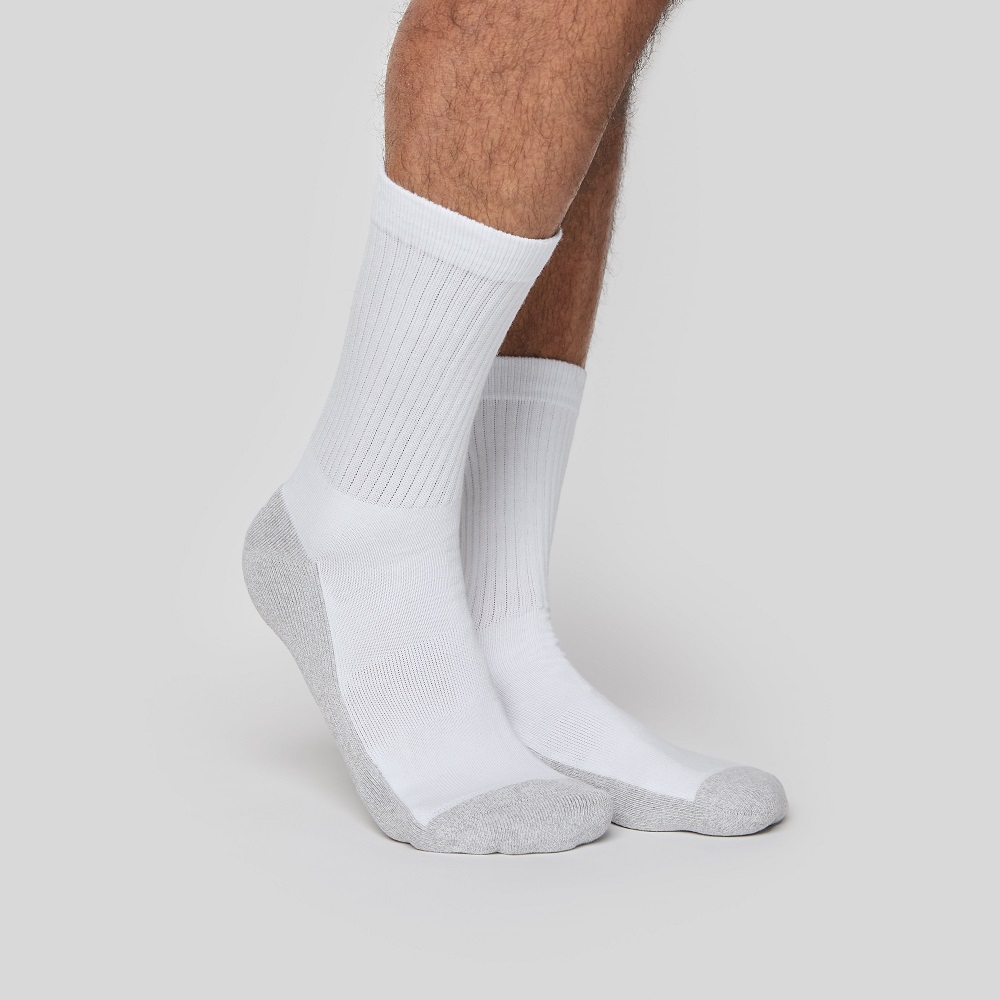
Key Features of High-Performance Athletic Sock
High-performance athletic socks are designed to meet the specific needs of active individuals. They focus on delivering comfort, support, and durability during physical activities. Below are the key features that set these socks apart.
Material and Fabric Technology
The fabric of athletic socks greatly affects performance. High-quality socks use advanced materials like nylon, polyester, or merino wool. These materials are lightweight, durable, and flexible. Some also incorporate spandex for stretchability, ensuring a snug and secure fit. Modern socks often utilize seamless construction to reduce irritation and chafing.
Fabric technology also includes anti-microbial treatments. These treatments fight bacteria, reducing bad odors and improving hygiene. When choosing athletic socks, look for materials that blend comfort and innovation for peak performance.
Cushioning and Support
Cushioning is crucial for comfort and shock absorption. Athletic socks usually have targeted cushioning in high-impact areas like the heel and forefoot. This minimizes impact and increases energy return.
Supportive features, such as arch compression bands, enhance foot stability. They reduce strain and potential injuries like plantar fasciitis. These features make your socks work harder for you during intense activities.
Moisture-Wicking Properties
Sweaty feet are uncomfortable and can lead to blisters. High-performance socks use moisture-wicking fabrics to keep feet dry. Materials like polyester and blends with wool pull moisture away from the skin. This process reduces the chance of fungal infections and keeps feet cool.
Moisture-wicking properties are especially useful for sports requiring long periods of activity, such as running or hiking. Keeping feet dry directly impacts overall performance and comfort.
Breathability for Comfort
Breathability is another vital feature of athletic socks. Mesh panels or vented designs improve air circulation inside the sock. This prevents overheating, especially during high-intensity exercises.
Proper airflow ensures your feet remain comfortable, even in extreme weather. Breathable socks are not only comfortable but also help in preventing foul odors from developing. Look for socks with built-in ventilation zones to ensure optimal breathability.
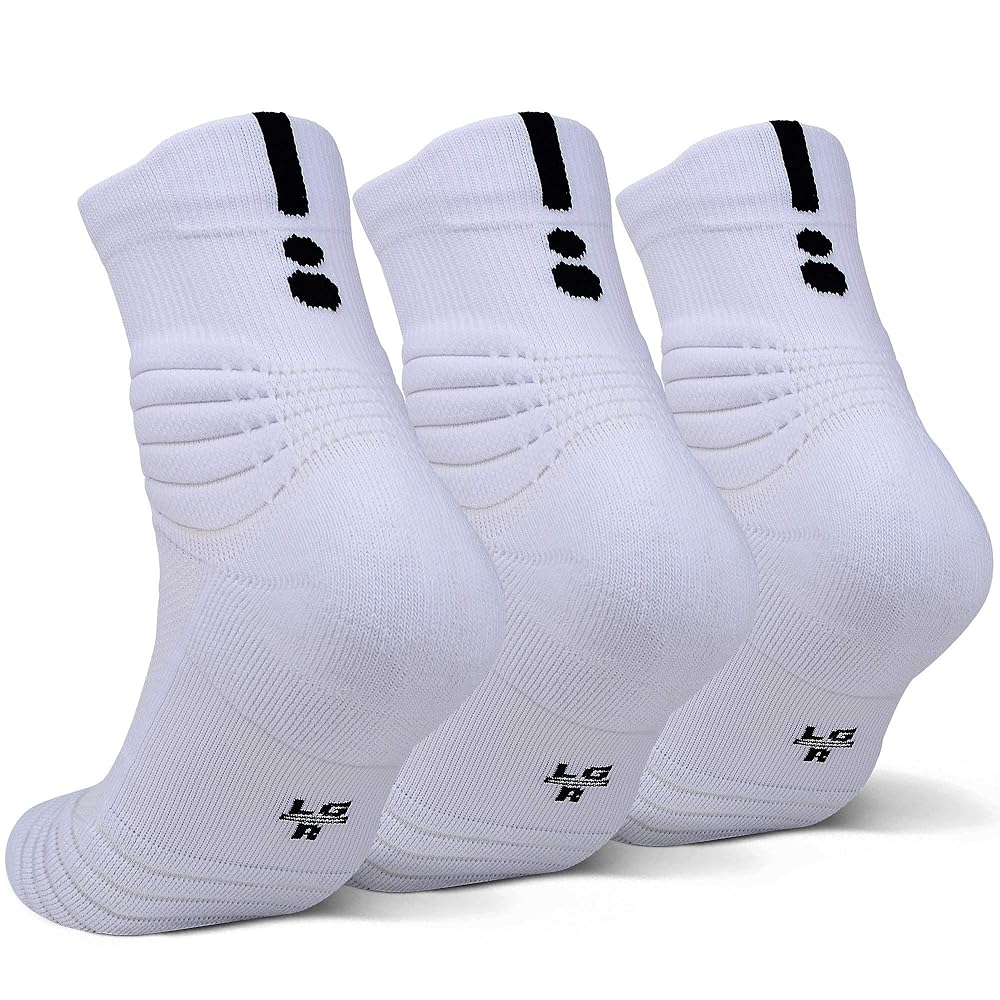
Types of Athletic Sock for Various Activities
Choosing the right type of athletic socks for your activity ensures comfort and performance. Different sports demand specific features in socks to meet varying challenges.
Running Socks
Running socks are designed to reduce impact and friction. They often have targeted cushioning in the heel and forefoot. This absorbs shock during long runs and prevents blisters. These socks use moisture-wicking fabrics to keep feet dry and cool. Breathable designs help improve airflow, reducing overheating during intense runs. Compression running socks can enhance blood circulation for better endurance.
Cycling Socks
Cycling socks are lightweight and snug-fitting to minimize bulk. They use moisture-wicking technology to keep feet dry during rides. Their thin material ensures compatibility with tight cycling shoes without compromising comfort. Some cycling socks feature ventilation zones for added breathability. Special arch support offers stability during extended pedaling.
Hiking Socks
Hiking socks focus on durability and protecting feet during long outdoor adventures. They are made with thick, cushioned materials to absorb impacts from uneven terrains. Many hiking socks include reinforced heels and toes for extended wear. Moisture-wicking properties help prevent dampness and reduce the risk of blisters. Merino wool is a popular choice for softness, warmth, and odor resistance.
Basketball and Soccer Socks
Basketball and soccer socks prioritize cushioning and support for high-intensity movements. These socks often include compression zones around the arch and ankle. This helps improve stability during rapid changes in direction. Their moisture-wicking fabrics keep feet dry during long matches or practices. Extended lengths in soccer socks provide shin coverage, often paired with shin guards.
Selecting activity-specific socks enhances your performance and keeps your feet safe and comfortable.
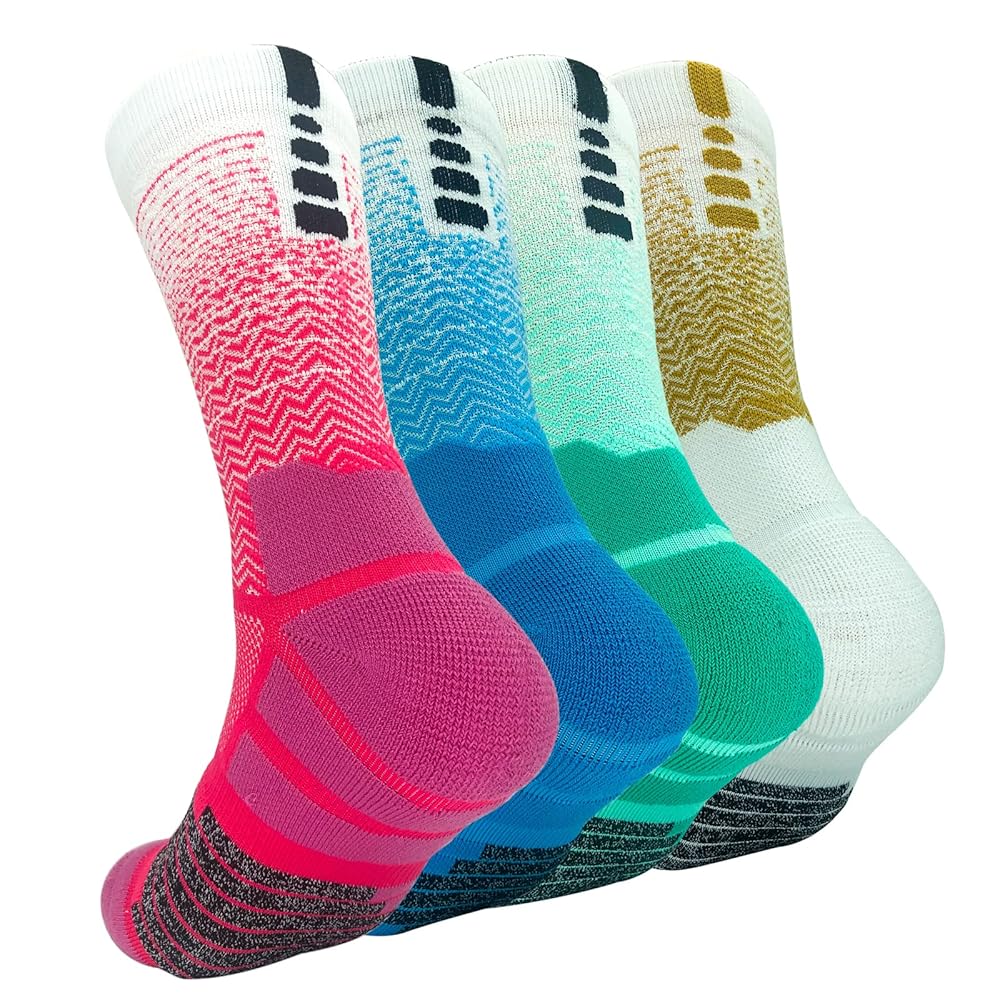
How to Select the Perfect Athletic Sock
Choosing the right athletic socks ensures comfort, safety, and enhanced performance. Here’s how you can make the perfect choice.
Matching Socks to Your Sport or Activity
Different activities demand specific sock features. For running, select socks with targeted cushioning and compression. These reduce impact and increase blood circulation for longer runs. Cyclists need lightweight, snug socks to fit tight shoes comfortably and improve pedaling stability. Hiking socks should be thick and cushioned to protect against rugged terrain. Activities like basketball or soccer require compression zones for foot stability and extended lengths for shin protection.
Determining the Right Fit and Size
Proper fit prevents discomfort and injuries. Measure your foot accurately to match the sock size. Choose a snug fit without tightness to ensure stability and comfort. Socks should also accommodate foot shape and your shoe type. Poorly fitted socks can cause blisters and slippage during activities.
Evaluating Durability and Longevity
Durability is essential for frequent use. Check the fabric quality before purchasing. Look for reinforced heels and toes as these areas experience the most wear. Choose socks with high-quality synthetic materials or blends like merino wool for lasting strength. Assess customer reviews to understand how the socks hold up after regular washing and use.
Top Brands for Athletic Sock
Choosing the right brand for your athletic socks is essential for performance and comfort. Popular brands provide specific features tailored to different sports and activities. Below, we dive into details to guide your selection.
Popular Brands for Different Sports
When shopping for athletic socks, look for brands known for quality and performance:
- For Running: Brands like Balega, Feetures, and Swiftwick offer socks designed for runners. These brands focus on cushioning, moisture-wicking materials, and blister prevention. They are ideal for long runs or intense training sessions.
- For Cycling: Defeet and Castelli excel in producing lightweight and breathable cycling socks. These socks offer a snug fit that pairs well with cycling shoes, ensuring comfort during long rides.
- For Hiking: Darn Tough and Smartwool are top choices for hiking socks. These brands use merino wool to provide warmth, softness, and odor resistance. Their reinforced design ensures durability on rugged trails.
- For Basketball & Soccer: Stance and Nike specialize in high-performance basketball and soccer socks. They incorporate added cushioning, arch compression, and extended lengths for better protection and stability.
Each brand tailors its socks to suit the unique needs of their target sport, ensuring optimal performance and support.

What Sets Premium Socks Apart
Premium athletic socks go beyond basic functionality. Here’s what differentiates them:
- Advanced Materials: Premium socks use top-grade fabrics like merino wool, nylon, or polyester blends. These materials improve durability, comfort, and performance.
- Innovative Features: Brands often include seamless toe closures, targeted padding, and reinforced zones. These features reduce irritation and improve longevity.
- Moisture Management: High-end socks excel in keeping your feet dry using advanced moisture-wicking technologies. They prevent blisters and odors, even during extended wear.
- Customization: Some premium brands provide activity-specific designs, such as extra ankle support for basketball or added compression for running.
- Sustainability: Many top brands now offer eco-friendly options. They use recycled materials or sustainable practices to minimize environmental impacts.
Investing in premium socks ensures superior comfort, durability, and performance, making them worth the cost for regular athletes.
Caring for Your Athletic Sock
Proper care is essential for maintaining the performance and durability of your athletic socks. With the right washing and maintenance routines, you can extend their life and ensure they stay comfortable and functional.
Washing and Maintenance Tips
- Follow Care Instructions: Always read the label for specific care guidelines. Different materials require different handling.
- Use a Gentle Detergent: Harsh detergents can damage the fabric. Use a mild, eco-friendly option instead.
- Wash in Cold Water: Cold water prevents shrinking and preserves the elasticity of your socks.
- Turn Socks Inside Out: This step reduces pilling and ensures a thorough cleaning of sweat and bacteria.
- Avoid Fabric Softeners: Fabric softeners can leave a residue that reduces moisture-wicking ability.
- Air Dry When Possible: Heat from dryers can degrade fabrics. Air drying maintains the sock’s structure and longevity.
- Wash Similar Items Together: Separate athletic socks from heavy items like jeans to reduce wear and tear.
Consistently following these steps will help keep your socks in top condition for longer use.
Extending Sock Longevity
- Rotate Your Socks: Avoid wearing the same pair daily to spread out wear.
- Store Properly: Keep socks in a cool, dry place to prevent moisture buildup and bacteria growth.
- Trim Your Toenails: Sharp or long nails can easily tear the fabric, shortening a sock’s life.
- Avoid Walking Without Shoes: Socks can wear out faster if used directly on abrasive surfaces.
- Repair Small Tears: Fix small holes or tears before they become larger to extend usability.
- Replace When Needed: Even well-maintained socks wear out eventually. Replace them when cushioning fades or they lose elasticity.
By following these care habits, you ensure your athletic socks stay effective, comfortable, and ready for action.
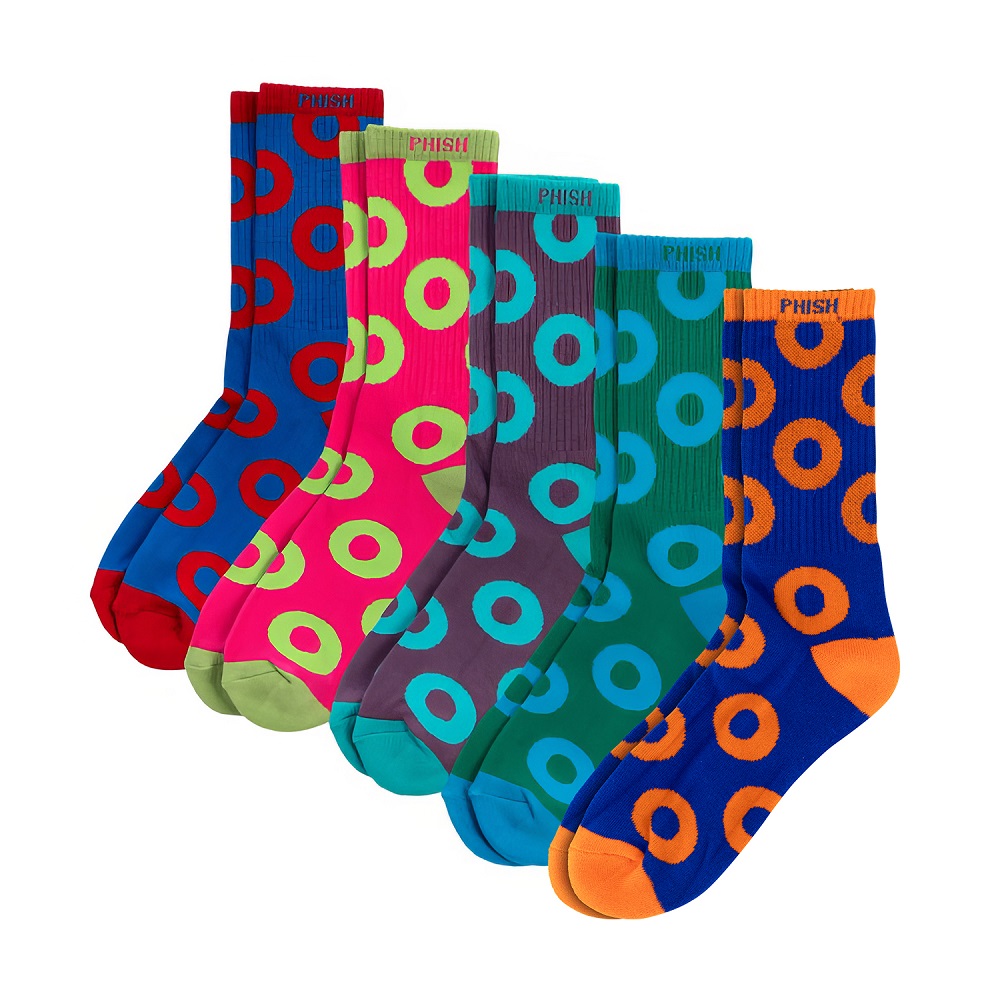
Common Mistakes When Buying Athletic Sock
Avoiding common mistakes is crucial when choosing athletic socks. It ensures comfort, durability, and optimal performance.
Overlooking Fabric Composition
Fabric composition affects sock performance. Many people ignore this and end up with unsuitable materials. Athletic socks should use fabrics like nylon, polyester, or merino wool. These materials offer durability, flexibility, and moisture-wicking properties. Cheap fabrics can lead to discomfort, poor hygiene, and faster wear. Check for advanced fabric technologies before buying to ensure your socks meet activity demands.
Buying the Wrong Size
Size impacts sock comfort and functionality. Oversized socks can bunch, causing blisters and slippage. Tight socks restrict movement and circulation, leading to discomfort and potential injuries. Always measure your feet and refer to the size chart. Snug-fitting socks are ideal for stability, but avoid excessive tightness. The right size ensures your socks stay in place during intense activities.
Ignoring Activity-Specific Requirements
Each sport demands specific sock features. Ignoring these requirements can harm performance and safety. Running socks need cushioning for shock absorption, while cycling socks require a snug fit. Hiking socks should offer durability and thick padding for rugged terrain. Buying general-purpose socks may leave you underprepared. Select socks tailored to your activity to maximize protection and comfort.
By understanding these common mistakes, you can make informed choices when buying athletic socks.
Assessing Your Activity Level and Needs
Understanding Your Sports Requirements
Each sport has specific requirements when it comes to footwear and socks. For example, runners may need different socks than cyclists due to the varying mechanics of foot movement. Understanding the demands of your preferred activities will guide your choice in selecting the best athletic socks. For instance, serious marathon runners might prioritize lightweight, moisture-wicking socks with minimal cushioning, while those engaging in strength training may prefer heavier, cushioned socks for added support.
Additional Considerations
Consider your foot type as well, including arch height and whether you tend to pronate or supinate while running. Socks with specific support features can help address common foot issues. If you have high arches, look for socks that offer additional arch support. If you experience blisters, consider socks with seamless construction or reinforced heel and toe areas. Personal preference plays a vital role as well, including factors like style, color, and brand loyalty, which will also influence your ultimate choice.
Conclusion
Athletic socks may seem like a small detail in the grand scheme of your sporting ensemble, but they play a vital role in enhancing performance, comfort, and overall enjoyment of physical activity. Understanding the different types of athletic socks, their key features, and the importance of fit will help you make informed choices that cater to your specific needs. By prioritizing comfort, support, and durability, you can optimize your athletic experience and keep your feet feeling great. With the right pair of athletic socks, you’ll be well on your way to achieving your fitness goals, enhancing your performance, and enjoying every step of your active lifestyle. So invest the time in selecting your perfect socks, and you may be surprised at how they elevate your athletic experience.
